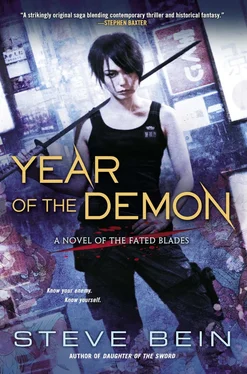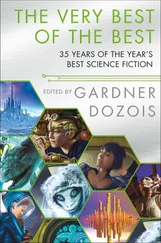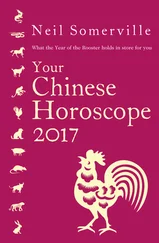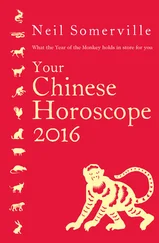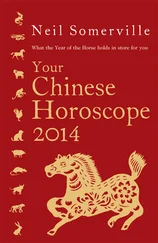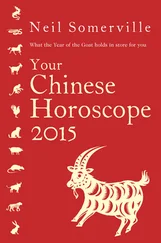On that note, I should mention that including Mio’s torture was a considered choice. My agent and my editor found the scene quite disturbing—so much so that my agent was only willing to read it once, and my editor suggested that perhaps I ought to take it out. Obviously I didn’t.
I chose to keep the scene because of what the story arc demands, not because I think torture is cool. Quite the opposite: I joined the Campaign to Ban Torture years ago, and I remain a member of the Center for the Victims of Torture today. Milan Kundera suggested that the true measure of our morality lies in how we treat those who are at our mercy, and I happen to think he’s right. Regardless of whether or not you agree with me, I hope you will grant that I have not glorified torture here.
Shifting from philosophy back to history, all of the military conquests I attribute to Hideyoshi in this book are true to life. Oda Nobunaga’s Sword Hunt was real, as was Hideyoshi’s, though on that count I must confess that I got extremely lucky. I don’t recall why I picked 1587 as the setting for Daigoro’s story in Daughter of the Sword , but it certainly wasn’t because I anticipated writing a second book, or that I planned to make the Sword Hunt a plot element in Daigoro’s continuing story. This was just one of those cases where you do your research and it gives you better ideas than you could have come up with on your own.
The Wind is a fictional clan, but ninja clans did exist, and they were more active in the Kansai than in any other region. Despite what you may have seen in pop culture, samurai were not “the good guys” and ninja were not “the bad guys.” Shinobi (or shinobi no mono , the period terms for what we now call ninja) were the original secret agents, routinely hired by the great houses as spies, forward observers, assassins, saboteurs, and the like. Their clans trained them in a wide range of skills, by no means limited to martial arts; they also learned a wide range of professional skills, the better to blend in and take on any disguise as necessary.
Incidentally, such disguises did not involve the trademark black bodysuit and face mask that we all know and love today. These would have been about as subtle as James Bond wearing a ghillie suit. The black garb that has become their emblem actually dates back to the theater; stagehands would wear all black, the better to go unnoticed as they moved certain props. (Stagehands do this in modern theater even today.) Somewhere along the line, a clever playwright needed to figure out how a ninja could sneak up on his protagonist, catching even the audience unawares. The answer was—like the ninja themselves—hiding in plain sight: just make one of the stagehands the assassin. The audience was delighted and a new tradition was born.
Featuring as prominently as the shinobi in this book is the ronin , or masterless samurai. According to bushido ideals, the samurai was to commit suicide at the loss of his master. Needless to say, not everyone lived up to the ideal. Many samurai became itinerant swords for hire, wandering the countryside as freely as waves on the sea—hence the name ronin , or “wave-person.” (Katsushima Goemon is one such case.) Other samurai chose to abandon their caste, shave their topknots, and join a monastery. (The abbot of Katto-ji is one such case.) Then there were those who gave the ronin their bad name: they became highwaymen and bandits, either falling in with criminal elements or forming gangs of their own.
The third profession to feature prominently in this book is the ama , usually translated as “pearl diver.” Literally, ama just means “sea-woman” (and with a swapped character, “sea-man”). The ama occupies a strange cultural space in that it is, to the best of my knowledge, the only profession in Japan that is defined by strenuous physical labor and is yet a profession that belongs to women, not men. The reasons for this are not entirely clear, though the U.S. Navy did yeoman’s work in trying to discover the answer. This was one of the gems you are only likely to find while writing a book and wanting to get the details right: a 380-page study on breath-hold diving, with detailed descriptions (and even diagrams!) of ama diving techniques, published in 1965 by none other than the Office of Naval Research. The SEALs were brand-spanking-new then, and it seems the navy was interested in training them to dive deeper and longer—an interest it has since suspended, officially designating breath-hold diving as “an extremely dangerous practice.” To my mind this tidbit only makes Kaida cooler. If at age thirteen she can outswim a SEAL, then the Wind will make a fine shinobi of her.
This book closes with recent history—namely, with the Divine Wind. My cult is fictional, but the inspiration for it is based in fact. In 1995 the Aum Shinrikyo cult carried out sarin gas attacks on the Tokyo subway system, killing thirteen and injuring over a thousand. I think it is fair to say that the sarin gas attack was to Tokyo what 9/11 was to New York City. By this I don’t mean to liken thirteen deaths to the 2,606 in the World Trade Center; rather, I mean to say that while terrorist attacks are hideous no matter where they occur, for such an attack to happen in one’s hometown is terrifying in a way nothing else can be.
This, of course, takes us to Mariko, who demands a totally different brand of research. I should mention at the outset that I interviewed (and in some cases trained with) law enforcement personnel in three different states, from I forget how many different organizations, which means any commanding officers who happen to be reading this should not assume that their officers were the ones who showed me such a good time. I find the cop research to be much more difficult than historical research, but for all of that, it’s also a hell of a lot of fun. I’ve had the chance to do ride-alongs, search houses, shoot machine guns, run combat courses, and work hand-to-hand control tactics. I will neither confirm nor deny that I violated ATF regulations when someone let me chuck a flash-bang grenade. I can answer that one definitively after the statute of limitations runs out.
Copspeak is every bit as much a foreign language as Japanese. In both cases the translator’s job is to walk that fine line between authenticity and readability, and in this book that meant taking certain liberties. For instance, I’m well aware that the Tokyo Metropolitan Police Department has Special Assault Teams, not SWAT teams. Since most of my readers know what SWAT means when they see it, and have no idea what SAT means when they see it, I’ve chosen to translate SAT as SWAT. I’ve also chosen to omit almost all of the abbreviations and number codes that are the epitome of copspeak—avoiding, for example, the kind of sentence I once heard a cop tell his dispatcher: “I’ll be seventy-six one J-5 to dicks.” (In English, that’s “I’m en route with a woman I’m taking to see the detectives.”)
If oddities of translation and historical context are of interest to you, I’ll recommend that you visit my Web site. I’ve got an appearances page there, with links to interviews and guest blog posts on topics like this. I post updates on my writing there too, and free sample chapters, and links to some of the Web sites I use in researching my work. You can find all of that stuff at www.philosofiction.com.
—Steve Bein
Geneseo, New York
March 2013
First and foremost, I have to thank my brother Dave. He comes first this time around because I was a jerk and forgot about him last time. He was the one who first suggested that Daughter of the Sword should have a glossary, which was a really good idea. So cheers to Dave, and jeers to me for forgetting to credit him last time.
Читать дальше
